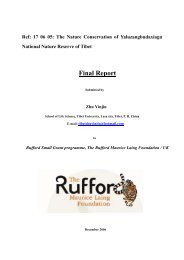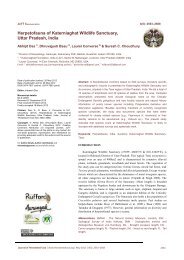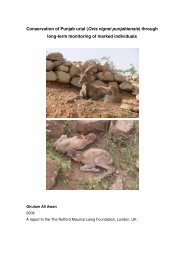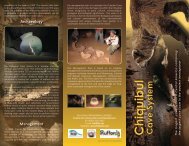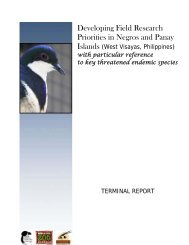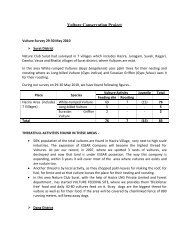Showcasing Urban Herpetofauna: A Conservational Effort through ...
Showcasing Urban Herpetofauna: A Conservational Effort through ...
Showcasing Urban Herpetofauna: A Conservational Effort through ...
Create successful ePaper yourself
Turn your PDF publications into a flip-book with our unique Google optimized e-Paper software.
mammals, birds etc and their conservation becomes a source of national concern<br />
and tops the list of conservational agenda. The herps and such other ignored and<br />
overlooked animals receive the least scientific and conservational attention. In fact<br />
the diversity of herps in an urban settlement is far than that of any other so called<br />
illustrious animals. Some of the herps such as common toads, wall lizards and<br />
such other species thrive in urbanized setup. Thus, ample scope still remains for<br />
these opportunistic species in such environments.<br />
<strong>Urban</strong>isation, where in one hand destroys the habitat of some organisms, at the<br />
same time makes way for certain other groups to survive. In fact urban setup may<br />
provide high food supply (including feeding by people), a large variety of new<br />
ecological niches and the lack of predators attracting animals to these centres.<br />
Thus, the terminology “Habitat Destruction”, which is flashed and highlighted in the<br />
field of conservation, must be rather used selectively. The term “Habitat<br />
Destruction”, in broad sense should rather be discouraged. Rather, “Habitat<br />
alteration” is a better selection of word when we wish to address habitat broadly.<br />
The rate at which, urbanisation is griping the world, a well documented study is<br />
imperative to assess its impact on the non human inhabitants. But the problem<br />
with such studies is lack of collaboration and co-ordination between<br />
conservationists and developers. Developers are rather weary of conservationists<br />
believing that the latter may suddenly pop up a species in their work site that<br />
would require immediate attention from conservational point of view thereby<br />
jeopardizing their work progress and causing them economic loss. Also the<br />
development and economy are very closely related and are interdependent on one<br />
another. The study site being tagged as the gateway of north-eastern India becomes<br />
of more importance in terms of economy and development of the state. Thus,<br />
addressing the issue of conservation of herps and habitat becomes of prime<br />
importance. Apart from these obstacles, there is also an urgent need to learn more<br />
about the effects of urban development on wildlife, so the effects can be mitigated in<br />
the future.<br />
Unsurprisingly, a search in IUCN red list for Homo sapiens (Human) shows that we<br />
human beings are categorised under the “least concern” group as our population<br />
shows an increasing trend. From this we can summarise that our population is not<br />
going to decrease any time soon. So, the only way to minimise the effect of<br />
urbanisation on biodiversity is to reduce resource utilisation to the extent possible<br />
so as to leave some for our neighbouring wild life. It has been said that the battle<br />
7



